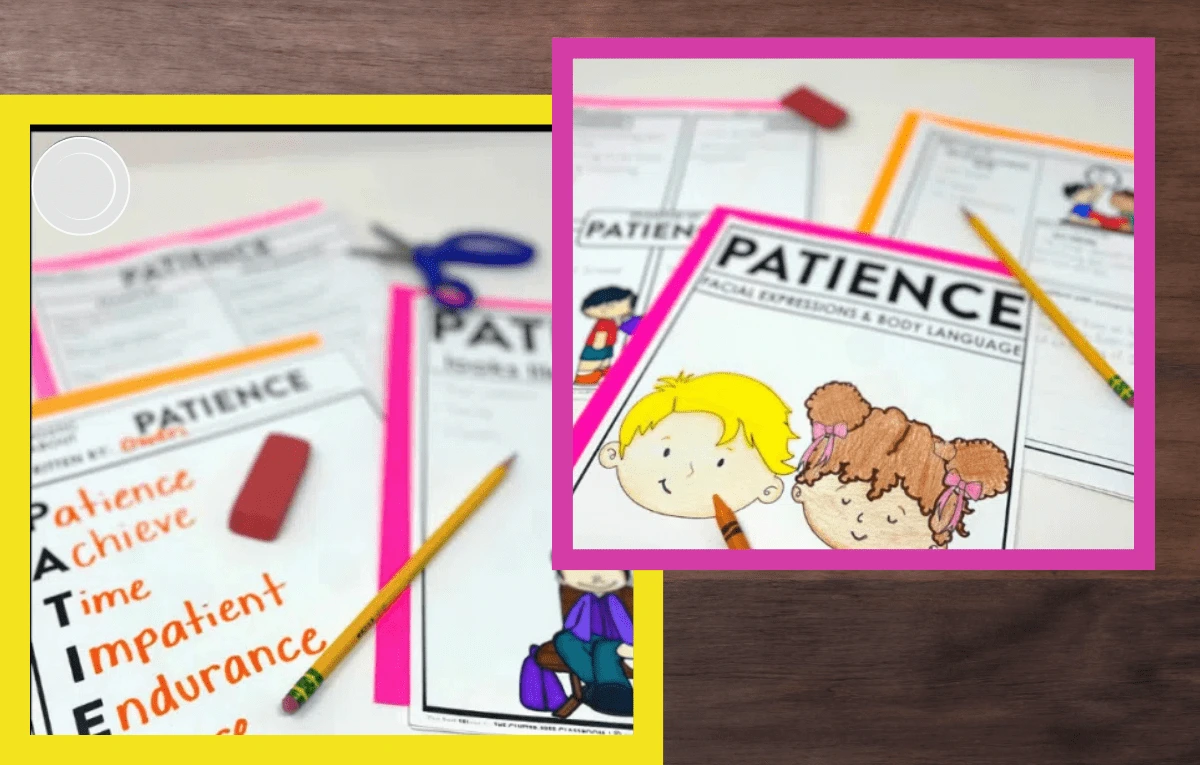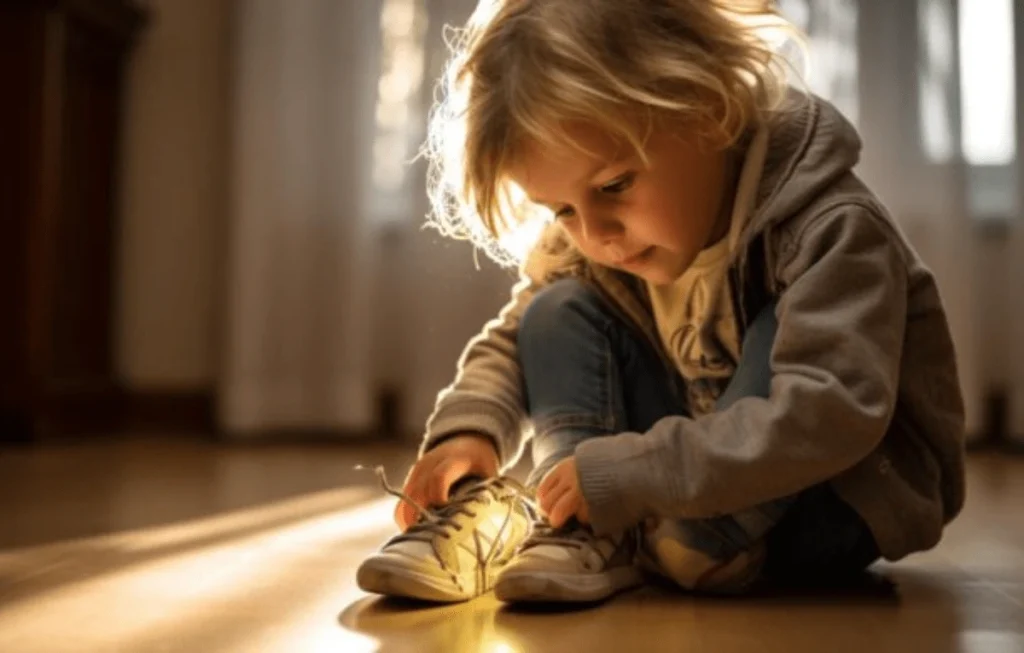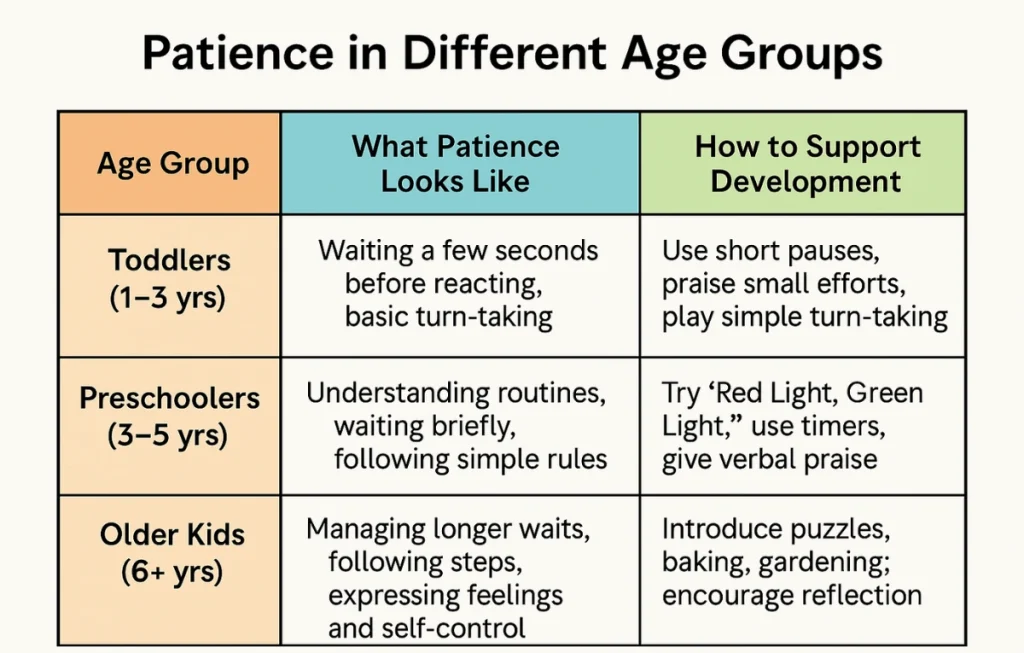
Building patience in children is crucial for their emotional growth. It enables them to handle frustration better, enhances their focus, and fosters their problem-solving abilities. By engaging in enjoyable activities, practicing with guidance, and learning from daily experiences, kids discover that patience isn’t merely about waiting—it’s an essential life skill that can empower them in many ways.
Why Is Patience Important?
Building patience in children is a vital skill that helps them navigate life’s challenges with confidence. In a fast-paced world, teaching kids to wait and tolerate delays can significantly improve their emotional health and social interactions. When children learn patience, they develop stronger problem-solving abilities, healthier relationships with peers, and greater resilience in the face of setbacks. Ultimately, building patience in children not only cultivates a sense of calm but also lays the foundation for lifelong success.
Tips for Teaching Patience
Model It
Children learn by observing the adults in their lives. By modeling patience in your own behavior, you teach your children the value of waiting and taking things slow. For instance, if you’re stuck in traffic, demonstrate calmness instead of frustration. Verbalize your thoughts: “I need to be patient, as we’ll arrive soon.” This shows them how to handle irritation with grace.
Reflect to Your Child What You See in Them
When you notice your child showing impatience, gently reflect this to them. For example, you might say, “I see you’re feeling a bit restless while waiting. That’s okay! Let’s take a deep breath together.” This not only validates their feelings but also encourages them to recognize and articulate their emotions.

Start Small & Set Up Your Child (and Yourself) for Success
Begin with short waiting periods that are manageable for your child. For instance, ask them to wait for just one minute before tasting a snack. Gradually increase the time as they become more comfortable with waiting. Setting realistic expectations helps build confidence in their ability to be patient, making the process enjoyable rather than frustrating for both of you.
Patience Stretching Technique
Turn patience into a game! Use the “patience stretching” technique by engaging your child in activities that require them to wait, like a simple board game or a timed puzzle. Celebrate when they succeed in waiting, reinforcing the idea that patience can be fun and rewarding.
Use Visual Cues
Visual aids can be effective tools for teaching patience. Consider using a timer to visually represent waiting times. Explain to your child that the timer shows how long they need to wait before getting something they desire. This gives them a tangible reference point, helping them understand the concept of time and waiting.
Practice Conscious Waiting
Encourage your child to practice “conscious waiting” during everyday activities. Whether it’s waiting for their turn in a game or letting the water boil for cooking, guide them to be mindful during the wait. Discuss what they can do during these moments, such as taking deep breaths, counting, or thinking of something they enjoy. This will strengthen their ability to remain calm and composed.
By incorporating these tips and activities, you can help your child develop the valuable skill of patience. Remember, patience is not just about waiting; it’s about cultivating a mindset that fosters resilience and calm in the face of life’s inevitable delays. With your guidance, your child can learn to embrace waiting as an essential part of their growth and development.
Activities for Teaching Patience
Getting kids involved in activities that promote patience can be a blast and super educational at the same time! Here are some fun ideas that will help children develop their patience skills while enjoying themselves.
Red Light, Green Light
This timeless game is not just a source of entertainment; it also teaches kids how to manage their impulses. In this game, one person plays the “traffic light,” calling out “green light” for everyone to move and “red light” for them to freeze. The real challenge is for the players to stop on a dime, helping them learn the importance of patience and self-control.
Egg and Spoon Walk
This activity is all about balance and focus, making it a great way to practice patience. Kids need to carry an egg (or any small object) on a spoon without letting it drop. Set a distance for them to walk; if they drop the egg, they have to start over. This teaches them the value of taking things slow and steady while honing their concentration.
Jigsaw Puzzle
Tackling jigsaw puzzles is a wonderful method for teaching patience. Encourage your child to work through the pieces carefully, waiting to find the perfect fit for each one. Celebrate their progress, no matter how small, to reinforce their determination and steady approach to finishing the puzzle.
Baking
Baking can be a delightful way to teach kids about patience. From waiting for the dough to rise to letting cookies cool before tasting, children learn that good things come to those who wait. Get them involved in measuring ingredients and talk about why patience is key to achieving the best results, turning it into a delicious lesson they’ll remember!
Gardening
Gardening shows kids that patience is crucial for growth. Have your child help plant seeds and explain that it takes time for plants to grow and produce fruit. They can water the plants and watch the changes unfold over time, learning that patience and care lead to rewarding results.
Painting
Let creativity shine as kids dive into painting. Encourage them to take their time and enjoy the process, reminding them that great art often requires patience.
Basic Turn-taking
Engaging in games that require turn-taking, such as board games or card games, is a fantastic way to naturally cultivate patience. Make sure to establish clear rules about waiting for one’s turn and highlight the importance of being considerate to others. This approach not only nurtures patience but also enhances social skills and emotional intelligence.
Have Patience Teaching Patience!
Teaching kids about patience doesn’t have to feel overwhelming! By weaving fun and interactive activities into their everyday lives, you can guide children to understand the benefits of waiting and the significance of persistence. Keep in mind that your own attitude towards patience is just as crucial as the activities you choose. If you approach it with enthusiasm and positivity, your children are more likely to join you on this journey of learning patience. By instilling a patient mindset today, you’re giving your kids a valuable life skill that will benefit them in the long run.
Teaching your child patience is a journey, and it’s just as important for you to practice patience along the way! Remember, learning this skill doesn’t happen overnight; it’s something that kids often pick up gradually. They might find it especially tough to be patient when they’re tired, hungry, or waiting for something that feels like an eternity to the
When your child shows patience, be sure to shower them with praise! Celebrate their little victories, no matter how minor they may seem, because they truly deserve it!
To make this learning experience more enjoyable and to strengthen your bond, why not share some stories from your own childhood about times you found it hard to be patient? This not only helps your child feel understood but also adds a bit of humor to the situation. By doing this, you’re not just teaching them the value of patience; you’re also building a sense of teamwork and understanding between the two of you.

FAQs
1. How can I teach my toddler to be more patient?
Start with short waiting activities, like waiting for a toy or snack. Use visual timers, sing songs during wait time, and reward calm behavior with praise. Keep it playful and consistent.
2. Why is patience important in child development?
Patience helps children manage emotions, follow rules, build social skills, and solve problems calmly. It lays the foundation for better learning, relationships, and emotional control.
3. At what age can children start learning patience?
Children begin learning patience as early as 1 year old. Even toddlers can start with basic turn-taking and short wait times. Patience grows gradually through guided practice.
4. What are some fun games to teach patience to kids?
Try games like “Red Light, Green Light,” puzzles, baking, planting seeds, or board games. These activities naturally encourage waiting, turn-taking, and self-regulation.
5. How do I handle a child who gets frustrated easily while waiting?
Validate their feelings (“I know waiting is hard”) and offer distractions like storytelling or sensory toys. Use consistent routines and gradually increase wait times to build tolerance.
6. How can I model patience for my child?
Stay calm during delays, talk through your emotions, and show how you handle frustration. Children learn best by watching how adults respond in challenging situations.
7. Can screen time affect a child’s ability to be patient?
Yes. Excessive screen time, especially fast-paced content, can reduce attention span and tolerance for boredom. Balance it with screen-free activities that promote mindfulness and focus.
8. What role does emotional intelligence play in patience?
Emotional intelligence helps kids recognize and manage feelings like boredom or frustration. The more emotionally aware they are, the easier it is to practice patience during stressful moments.
9. Are there any books that teach children about patience?
Yes! Picture books like “Waiting Is Not Easy!” by Mo Willems or “The Most Magnificent Thing” by Ashley Spires are great for teaching patience through stories kids can relate to.
10. How long does it take to see improvement in a child’s patience?
It varies by age and personality, but with consistent guidance, most kids show progress within weeks. Celebrate small wins and stay positive—patience is a skill that grows over time.

